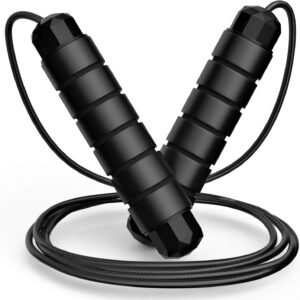When it comes to weight loss, the debate between cardio and strength training is a hot topic. Both forms of exercise have their unique benefits, but which one is more effective for shedding those extra pounds? In this article, we’ll break down the pros and cons of cardio and strength training, helping you decide which is better for your weight loss journey. Cardio vs Strength Training for Weight Loss.
Understanding Cardio and Strength Training
Cardio (Cardiovascular Exercise):
Cardio refers to any form of exercise that raises your heart rate and keeps it elevated for an extended period. Common examples include running, cycling, swimming, and aerobics. Cardio is often associated with burning calories and improving cardiovascular health.
Strength Training:
Strength training, also known as resistance training, involves exercises that build muscle mass and strength. This can include weight lifting, bodyweight exercises like push-ups and squats, or using resistance bands. Strength training is often linked to increased muscle tone and metabolic rate.
Cardio for Weight Loss
Check The Product Price on Amazon
Pros:
- Calorie Burn: Cardio is excellent for burning calories during the workout. For example, a 30-minute run can burn between 300-600 calories, depending on intensity and body weight.
- Heart Health: Regular cardio improves cardiovascular health, reducing the risk of heart disease.
- Accessibility: Cardio exercises like walking or jogging require minimal equipment and can be done almost anywhere.
Cons:
- Plateau Effect: Over time, your body may adapt to the same cardio routine, leading to fewer calories burned.
- Muscle Loss: Excessive cardio without proper nutrition can lead to muscle loss, which can slow down your metabolism.
Strength Training for Weight Loss
Check The Product Price on Amazon
Pros:
- Increased Metabolism: Muscle tissue burns more calories at rest compared to fat tissue. Building muscle through strength training can increase your resting metabolic rate, helping you burn more calories throughout the day.
- Afterburn Effect: Strength training can lead to Excess Post-Exercise Oxygen Consumption (EPOC), where your body continues to burn calories at an elevated rate after the workout.
- Body Composition: Strength training helps in toning and shaping your body, giving you a more defined appearance as you lose weight.
Cons:
- Time-Intensive: Building significant muscle mass requires consistent effort over time, and results may not be as immediately visible as with cardio.
- Equipment Needed: While bodyweight exercises are effective, more advanced strength training often requires access to gym equipment.
Which is Better for Weight Loss?
The truth is, both cardio and strength training have their place in a well-rounded weight loss plan. Here’s how you can combine both for optimal results:
- Start with Cardio: If your primary goal is to lose weight quickly, incorporating regular cardio sessions can help you burn a significant number of calories. Aim for at least 150 minutes of moderate-intensity cardio per week.
- Incorporate Strength Training: To ensure that you’re not just losing weight but also maintaining muscle mass, include strength training exercises at least 2-3 times per week. This will help boost your metabolism and improve your overall body composition.
- High-Intensity Interval Training (HIIT): HIIT combines the benefits of both cardio and strength training. These short, intense bursts of exercise followed by rest periods can maximize calorie burn and improve cardiovascular fitness.
Tips for Success
- Balanced Diet: Exercise alone won’t lead to weight loss if your diet isn’t in check. Focus on a balanced diet rich in whole foods, lean proteins, healthy fats, and complex carbohydrates.
- Consistency: Whether you choose cardio, strength training, or a combination of both, consistency is key. Stick to a regular exercise routine and make adjustments as needed.
- Listen to Your Body: Pay attention to how your body responds to different types of exercise. If you’re feeling fatigued or experiencing pain, it may be time to switch up your routine or take a rest day.
Conclusion
So, cardio vs. strength training: which is better for weight loss? The answer isn’t black and white. Both forms of exercise offer unique benefits that can contribute to weight loss and overall health. For the best results, consider incorporating a mix of both into your fitness routine. Remember, the most effective exercise plan is one that you can stick to in the long term. Start today, and you’ll be on your way to achieving your weight loss goals!
By understanding the strengths and weaknesses of both cardio and strength training, you can create a balanced workout plan that maximizes weight loss and improves your overall health. Whether you’re hitting the pavement for a run or lifting weights at the gym, the key is to stay consistent and enjoy the process. Happy training!



